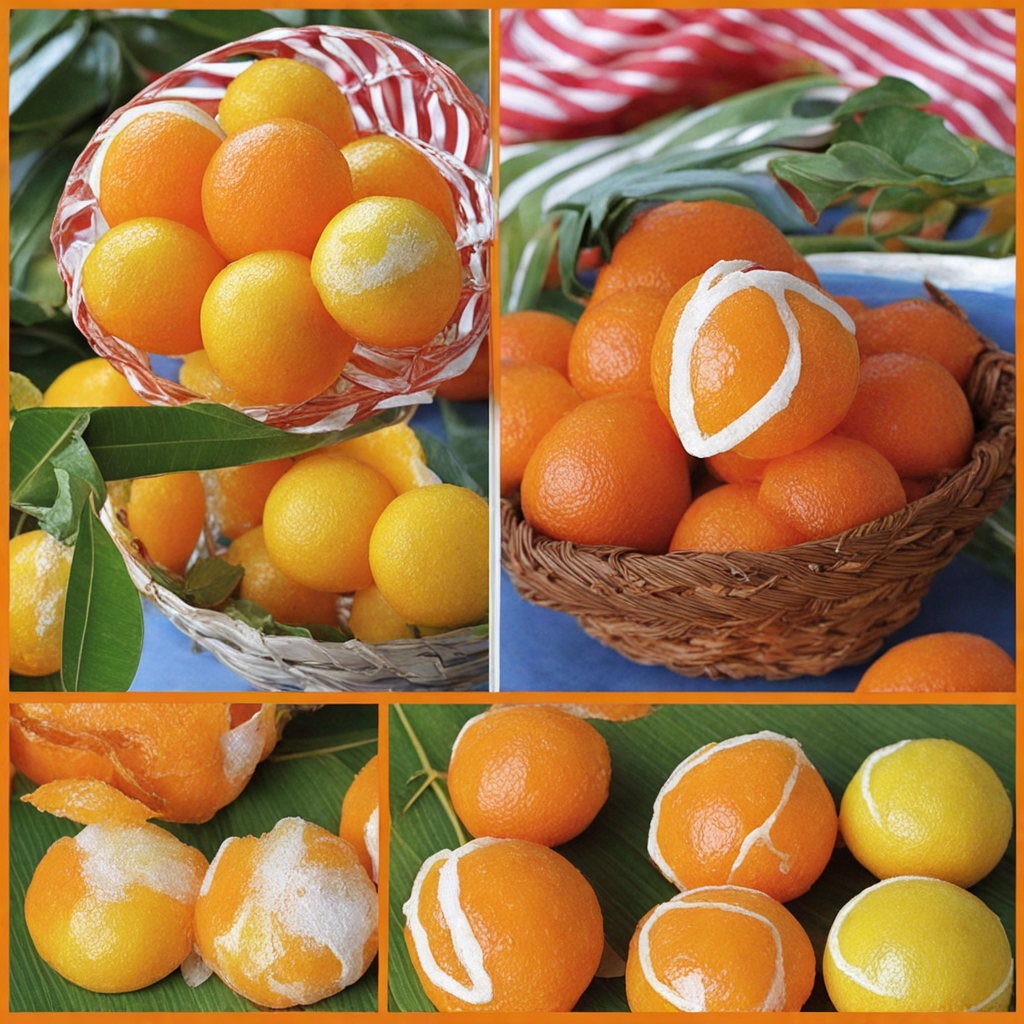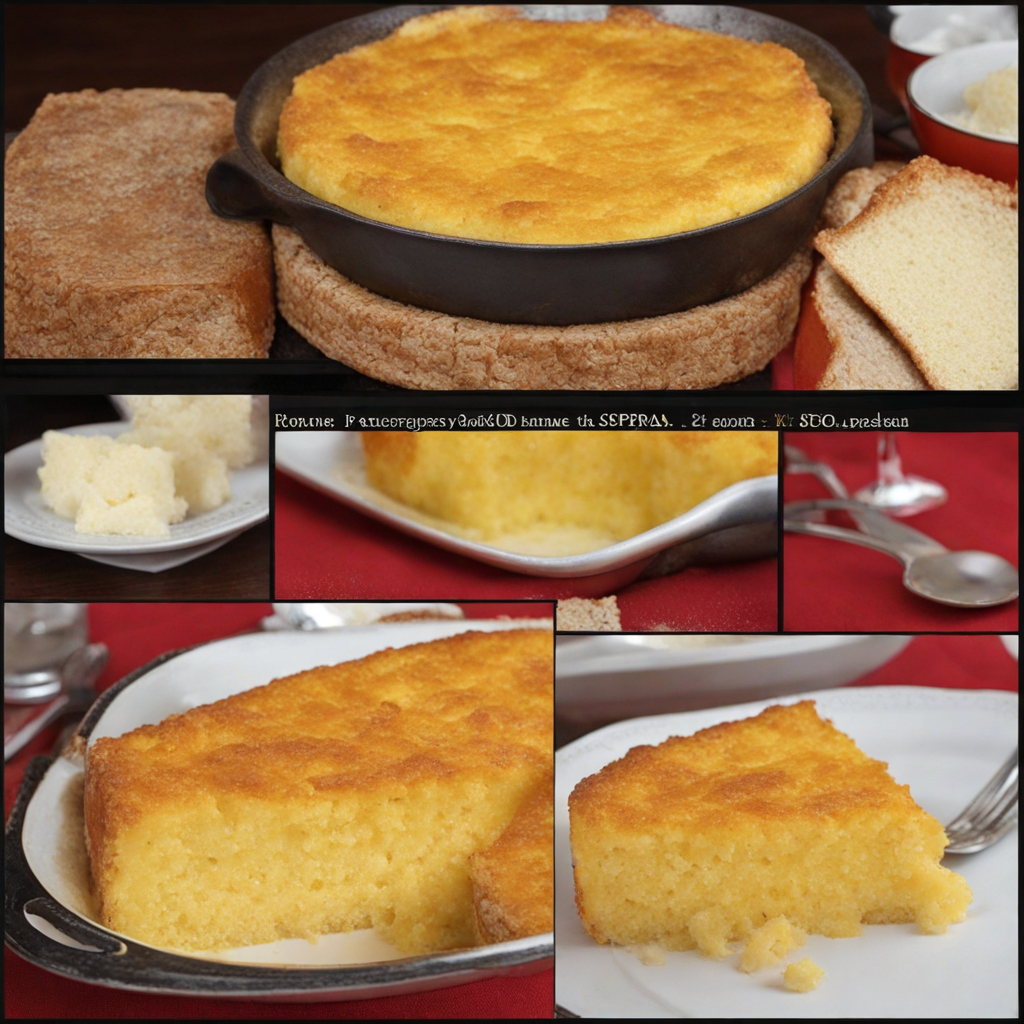Kosereva
Kosereva is a traditional Paraguayan dish that embodies the rich culinary heritage of the country, blending indigenous ingredients with European influences. At its core, this dish features a base of corn, which is a staple in Paraguay, often ground into a fine flour and mixed with various flavorful components. The dough is typically seasoned with a medley of spices, including cumin and garlic, which infuse the dish with depth and warmth. The addition of cheese, often locally sourced and rich in flavor, creates a creamy texture that complements the corn beautifully, resulting in a delightful combination of taste and mouthfeel. What sets Kosereva apart from other corn-based dishes is its unique cooking method. Traditionally, it is baked in a clay or wooden oven, allowing the flavors to meld and the exterior to develop a crisp, golden-brown crust. This method not only enhances the flavor but also gives the dish an inviting aroma that fills the air. Additionally, some variations of Kosereva may include vegetables such as peppers or even meats, making each version a reflection of the local ingredients available and the cook's creativity. Served warm, Kosereva is often enjoyed during gatherings or family meals, bringing people together around the table. It is typically accompanied by a fresh salad or a side of guasú, a traditional Paraguayan corn pudding, which complements its savory notes. The experience of tasting Kosereva is not just about savoring a dish; it’s about connecting with the culture and warmth of Paraguayan hospitality, making it a must-try for anyone looking to explore the diverse flavors of South America.
How It Became This Dish
Kosereva: A Culinary Journey Through Paraguay's Heart Origins and Definition Kosereva, a traditional dish of Paraguay, is emblematic of the country's rich culinary heritage and the deep-rooted cultural influences that have shaped its cuisine over centuries. This dish, often made with corn as its primary ingredient, showcases the fusion of indigenous traditions with Spanish colonial influences, resulting in a unique gastronomical experience that is both hearty and flavorful. The origin of Kosereva can be traced back to the Guaraní people, one of the predominant indigenous groups in Paraguay. The Guaraní civilization has a long-standing relationship with maize (corn), which has been a staple food in their diet for thousands of years. The word "kosereva" itself is derived from the Guaraní language, signifying the dish’s deep roots in the culture and cuisine of the region. Traditionally, Kosereva is prepared using fresh corn, often ground or grated, mixed with cheese, and sometimes combined with other ingredients such as eggs or milk to create a rich, custard-like texture. Cultural Significance Kosereva is more than just a dish; it is a symbol of Paraguayan identity and community. In rural areas, it is often prepared during family gatherings, celebrations, and festivals, serving as a means of bringing people together. The act of preparing Kosereva is often communal, with family members or neighbors working side by side to create this beloved dish. It is not uncommon for women in the community to gather for a day of cooking, sharing stories and laughter as they prepare Kosereva for a special occasion. The dish is also closely associated with the agricultural calendar, particularly during the harvest season. As corn is harvested, families celebrate by making Kosereva, reflecting the deep connection between the land and the people. This cultural practice has fostered a sense of identity among Paraguayans, as Kosereva represents the resilience of indigenous customs in a rapidly modernizing world. In addition to its role in social gatherings, Kosereva holds a place in Paraguayan folklore. It is often featured in stories and legends, symbolizing abundance and the nurturing spirit of the land. Such narratives highlight the importance of maize in Guaraní culture, as it is not only a food source but also a sacred element that sustains life and community. Development Over Time Throughout history, Kosereva has evolved, reflecting the dynamic nature of Paraguayan cuisine. The arrival of Spanish colonizers in the 16th century introduced new ingredients and cooking techniques that would influence many aspects of local food culture. For example, the incorporation of dairy products like cheese and milk into the recipe can be traced back to Spanish culinary practices. During the colonial period, the adaptation of Kosereva mirrored the broader changes occurring in Paraguayan society. As the Guaraní people interacted with European settlers, their culinary traditions began to blend, resulting in dishes that retained indigenous roots while embracing new flavors. The introduction of livestock farming in Paraguay also contributed to the evolution of Kosereva, allowing for the use of animal products that enriched the dish's flavor profile. In the 19th and 20th centuries, Kosereva continued to reflect the socio-political landscape of Paraguay. The aftermath of the Paraguayan War (1864-1870) led to significant changes in the country's demographics and economy. Many rural families faced hardships, and traditional dishes like Kosereva offered not only sustenance but also comfort and a sense of continuity in times of uncertainty. As urbanization grew, Kosereva remained a cherished dish, often made in homes and served in restaurants, providing a taste of tradition amid the changing landscape. In contemporary Paraguay, Kosereva has experienced a resurgence in popularity, especially among younger generations who seek to reconnect with their cultural heritage. Chefs and home cooks alike have begun to experiment with the dish, using modern techniques and ingredients while still honoring its traditional roots. This has led to a new wave of creativity, where variations of Kosereva are being crafted, incorporating elements such as herbs, spices, and even exotic ingredients to cater to evolving palates. Moreover, the global interest in indigenous and traditional foods has placed Kosereva on the culinary map. Food festivals and cultural events in Paraguay often showcase Kosereva, allowing locals and tourists alike to experience the dish's rich flavors and historical significance. This has sparked a renewed interest in Paraguayan cuisine, with Kosereva serving as a gateway for others to explore the diverse culinary landscape of the country. Kosereva in Today’s Culinary Scene Today, Kosereva is celebrated not only as a traditional dish but also as a canvas for culinary innovation. Chefs in Paraguay and beyond have embraced the dish, incorporating it into their menus in creative ways. Fusion variations may include the addition of local ingredients such as herbs and spices, transforming Kosereva into a gourmet experience while still paying homage to its humble origins. In many rural communities, Kosereva remains a staple, often served at local markets and food fairs, where its authenticity shines through. Street vendors and small eateries pride themselves on their unique recipes, each claiming to have the best Kosereva in town. This local competition fuels a sense of pride and community, as families often pass down their recipes through generations, ensuring that the legacy of Kosereva continues to thrive. Furthermore, Kosereva has found a place in the hearts of those who have left Paraguay. Paraguayans living abroad often recreate the dish as a way to connect with their roots, sharing it with friends and family to introduce them to the richness of Paraguayan culture. This act of cooking Kosereva serves as a reminder of home, bridging distances and fostering a sense of belonging. Conclusion Kosereva is more than just a dish; it is a representation of Paraguay's cultural identity, resilience, and evolving culinary landscape. Rooted in the traditions of the Guaraní people, the dish has adapted over time, reflecting the influences of colonization, social change, and modern innovation. As Paraguay continues to embrace its culinary heritage, Kosereva stands as a testament to the enduring power of food as a means of connection, celebration, and cultural expression. Whether enjoyed at a family gathering, a local festival, or a gourmet restaurant, Kosereva remains a beloved staple that nourishes both the body and the soul, carrying with it the stories and traditions of a vibrant nation.
You may like
Discover local flavors from Paraguay







